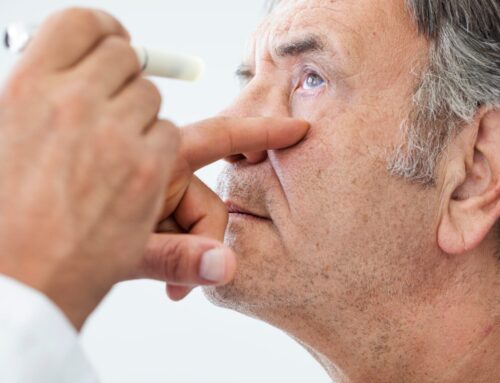
What Are The Three Types Of Age-Related Cataracts?
As we age, our vision can begin to deteriorate for several reasons, but age-related cataracts are one of the most common. Cataracts occur when the lens inside your eye becomes clouded over time. Cataracts can make your vision blurry, cloudy and misty. Treatment is essential since these patches only grow larger and impact your vision more and more.
The best way to treat cataracts is with surgery, which can effectively eradicate them and prevent them from returning. However, the style of cataract surgery you have will depend on the type of cataracts you have, as different types can develop.
Learn more about the different types of cataracts with Eye Clinic London.
Nuclear cataracts
Nuclear cataracts affect the middle part of your lens. When they first develop, you may become more near-sighted and even see an improvement in your reading vision. However, the lens will turn a darker yellow over time and block your vision. Sometimes the lens can turn brown too. When the lens changes colour, it can make it harder for you to distinguish between different colours.
Many factors can put you at risk of developing nuclear cataracts, such as:
- Genetics
- Age
- Smoking
- UV light exposure
- Eye injuries
- Underlying health conditions
Diagnosing these cataracts will involve an eye exam by a medical professional, as they must confirm that you have nuclear cataracts.
The best treatment for nuclear cataracts is phacoemulsification cataract surgery. This is where the ophthalmologist removes the nuclear cataract and replaces it with an intraocular lens.
Cortical cataracts
Cortical cataracts start as white streaks on your lens’ outer edge. As it develops, the lines grow closer to the centre and block your vision. When you have cortical cataracts, you may find that bright lights bother your eyes at night, affecting your ability to drive or go out in the dark.
Anybody can develop cortical cataracts, but some may have a higher risk. These risk factors include:
- Previous injury or inflammation of your eye
- Diabetes
- High blood pressure
- Autoimmune diseases such as rheumatoid arthritis
- Excessive alcohol consumption
- Smoking
- Obesity
- Overexposure to UV light
- Usage of corticosteroid medication
An ophthalmologist must diagnose cortical cataracts to ensure they recommend the correct treatment for you. Again, a diagnosis will usually be made during an eye examination.
Treatment for cortical cataracts is either phacoemulsification or femtosecond laser cataract surgery, which uses a laser to help remove and break down the cataract.
Posterior subcapsular cataracts
Posterior subcapsular cataracts develop as you age and are easily treatable. Typically, with these cataracts, a small obstruction will start to form near the back of your eye lens, changing your reading sight and sensitivity to bright lights. They can also cause a glare in your vision when you look at lights.
Posterior subcapsular cataracts develop faster than other cataracts, so you may need treatment for them sooner. Their leading cause is ageing, but there are other risk factors too. These can include:
- Diabetes
- Eye injuries
- Extreme near-sightedness
- Having previously undergone vitreoretinal surgery
- Excessive use of corticosteroids
These cataracts will usually be diagnosed with an ophthalmoscopic examination to assess the degree and severity of the cataracts. Ophthalmologists typically recommend treatment relatively soon as cataracts can progress fast and impair your vision further.
Cataract surgery is the best and most common treatment for these cataracts. The ophthalmologist will remove the cataract lens and replace it with an artificial one.
Lens-induced glaucoma
If you leave cataracts untreated, they can cause lens-induced glaucoma, which is a type of secondary glaucoma. The thickened lens pushes the iris forward, obstructing the trabecular meshwork, so the vitreous fluid can not drain out properly, causing raised pressures. Therefore, it is important to address cataracts as early as possible to prevent vision loss.
Treatment options for cataracts
Treatment for cataracts will depend on the type of cataract you have — some of them progress faster than others and will therefore need treatment sooner.
Non-surgical treatment
There are some non-surgical treatments that you can try for your cataracts before having surgery. These will not cure your cataracts but can help you manage your symptoms. For instance, wearing prescription glasses or contact lenses can help to boost your vision when your cataracts are in the early development stages. It’s a good idea to update your prescription so your glasses support your vision as much as possible.
Increasing your reading prescription can be helpful if cataracts are affecting your ability to see close-up. You can also modify the lighting around you to boost your vision. Some people like to use a magnifying glass for specific activities like reading, too, as it can provide magnification without having to wear glasses.
However, it’s important to remember that a magnifying glass won’t match your prescription, so it may not be suitable for your eyes long-term.
Most people with cataracts find that natural light allows them to see better than artificial light but try not to face the sun as it can cause a glare in your vision. Try finding the best position to sit in each room that works with the natural light and enhances your eyesight too.
Surgical treatment
The most common cataract treatment is surgery, which removes the cataract and prevents it from returning.
During the surgery, your ophthalmologist will remove the affected lens and replace it with an artificial one. Cataracts cannot grow or develop on the artificial lens, so cataract surgery is a permanent solution.
Preventing cataracts
There are no definitive methods that guarantee cataract prevention, but there are certain things you can do that can reduce your risk of developing them. Most importantly, you must have regular eye examinations, which can catch any eye conditions or problems and ensure early treatment.
It’s also vital to stop smoking (if you do smoke) and eat a well-balanced diet. Following a diet rich in antioxidants benefits your eye health, and reduces the progress of cataracts. So try incorporating foods rich in vitamin E and omega-3 like avocados, and nuts, and greens and fruits containing Vitamin C like kale, spinach and tomatoes, as well as freshly squeezed oranges and grapefruits.
You also need to manage any other health conditions you may have like diabetes, which can increase your risk of cataracts. Always wear sunglasses when out, especially in the sun, as excessive exposure to UV rays can cause cataracts.
To reduce your risk of cataracts, you must take good care of your eye health. This means using eye drops when needed, having regular examinations and leading a healthy lifestyle.
Conclusion
With over 400,000 cataract surgeries taking place in the UK each year, it’s easy to see just how common the condition is. Although you can’t always prevent cataracts, you can do something to reduce your risk.
If you are struggling with cataracts or problems with your vision, book a consultation with Eye Clinic London. Our expert team of ophthalmologists is here to help you restore and enhance your vision.
Sources
https://www.nhs.uk/conditions/cataracts/
https://www.mayoclinic.org/diseases-conditions/cataracts/symptoms-causes/syc-20353790
https://www.nei.nih.gov/learn-about-eye-health/eye-conditions-and-diseases/cataracts

About the expert
Mr Hamada | Consultant Ophthalmologist and Corneal Surgeon
MD, MSc, DO (hons), FRCSEd, FRCOphth I am Samer, founder and consultant ophthalmic surgeon with over 20 years’ experience in ophthalmology. I am a world-renowned specialist in cornea, cataract and refractive surgery. I’m not only a leading surgeon but also the only dual fellowship trained in corneal diseases in children from reputable institutions in the UK. At Eye Clinic London I work closely with other consultant ophthalmologists, optometrists and orthoptists to achieve the best outcomes for our patients. Our main aim is to make sure our patients get the safest and best treatments available to them. We put your safety before anything else so you can rest assured that if you choose us you will be in the best and safest hands.



